Last September, while Indian prime minister Narendra Modi met with tech titans in Silicon Valley, his administration quietly unveiled a $1.5 billion development package for the isolated Andaman and Nicobar island chains, meant to turn the islands’ capital city, Port Blair, into a hub of the ship repair industry by developing port infrastructure.
Less than two weeks later, the government announced that it would soon begin to create an economic development plan for its island territories. The two announcements followed years of claims that India is quietly taking steps to strengthen its military posture in the islands. Put together, they seem to show that India is finally taking its eastern outposts seriously.
 Any sign of increased investment in the Andaman and Nicobar islands will please those who want India to play a larger and more aggressive role in policing the Indian Ocean. The announcement, however, should be understood in the context of Indian domestic politics and India’s long history of poor follow-through when it comes to its domestic security. It remains to be seen whether India will sustain its renewed attention on its own “Far East.”
Any sign of increased investment in the Andaman and Nicobar islands will please those who want India to play a larger and more aggressive role in policing the Indian Ocean. The announcement, however, should be understood in the context of Indian domestic politics and India’s long history of poor follow-through when it comes to its domestic security. It remains to be seen whether India will sustain its renewed attention on its own “Far East.”
Arcing north-northwest from the northern tip of Sumatra, the Andaman and Nicobar islands are far closerW to Myanmar and Indonesia than to mainland India and are only 200 nautical miles from Singapore. Many of the islands are home only to indigenous groups that have strictly limited contact with the outside world, while others are uninhabited, making the area vulnerable to foreign infiltration. Their significance lies mainly in their location: near the western outlet of the Malacca Strait and well-situated to form part of what Chinese military strategists have called a “metal chain” blocking Chinese access to Europe and the Middle East.
The announcement of the Andaman and Nicobar development package followed nearly a year of increased engagement by New Delhi with the Indian Ocean region, beginning with Modi’s visit to Southeast Asia in November. His visits, and theannouncement that his administration would “Act East” (as opposed to the government’s 20-year-old “Look East” policy), were meant to signal that India has finally gotten serious about exploiting the strategic potential of the Indian Ocean region. The development package for Andaman and Nicobar appears to show that the government is re-envisioning the island chain as an important commercial hub on the route between India and Southeast Asia, as well as strategic outposts.
But the timing and details of the announcement suggest that it has as much to do with India’s electoral politics as with naval strategy. Andaman and Nicobar’s parliamentary representative, a member of Modi’s own Bharatiya Janata Party (BJP),leaked the news of the development package to a local newspaper on September 18, four days before the islands held municipal elections. The BJP was facing an unexpectedly strong challenge from the rival Telugu Desam Party (TDP), which went on to win its first-ever seats on Port Blair’s municipal council.
Announcing new funding initiatives in advance of elections is a common campaign strategy in India—as seen in Modi’s announcement of a $19 billion development package for the northern state of Bihar in the run-up to its hotly contested elections. It is equally common for much of the funds promised during the campaign to disappear after the election takes place.
A closer look at those projects that have already been green-lit makes clear that development will be less seaward-looking than one might expect given Andaman and Nicobar’s status as an archipelago territory. Fully three-quarters of the funds (about $244 million dollars) have been earmarked for road- and bridge-building, with $146 million dollars of that going to build 60 miles of highway. Only $31 million dollars have been designated for a directly maritime-related project (development of a shipping transport facility), with the remaining funds going toward upgrading the Port Blair airport.
 Should Modi’s administration fail to follow through on its promises to pay more attention to its maritime territories, it would be following a well-established pattern. India has been promising to beef up its presence in the islands since at least 2001, when it created the Andaman and Nicobar Command. The decision to rotate control of the command among the services, however, preventeddevelopment of the islands as a naval hub. In 2008-09, government officials responded positively to a push by Vice Admiral Vijay Shankar, then Commander in Chief of the Andaman and Nicobar Command (CINCAN), to see the islands as “springboards” not “outposts,” but once again little was actually done. More recently, rumors have circulated that the islands might receive a dedicated fleet, but it is unclear whether this reflects government thinking or the lobbying effortsof the current CINCAN, Vice Admiral PK Chatterjee. In light of this history, observers would do well to heed Chatterjee’s admission that “future accretions remain a major challenge.”
Should Modi’s administration fail to follow through on its promises to pay more attention to its maritime territories, it would be following a well-established pattern. India has been promising to beef up its presence in the islands since at least 2001, when it created the Andaman and Nicobar Command. The decision to rotate control of the command among the services, however, preventeddevelopment of the islands as a naval hub. In 2008-09, government officials responded positively to a push by Vice Admiral Vijay Shankar, then Commander in Chief of the Andaman and Nicobar Command (CINCAN), to see the islands as “springboards” not “outposts,” but once again little was actually done. More recently, rumors have circulated that the islands might receive a dedicated fleet, but it is unclear whether this reflects government thinking or the lobbying effortsof the current CINCAN, Vice Admiral PK Chatterjee. In light of this history, observers would do well to heed Chatterjee’s admission that “future accretions remain a major challenge.”
There is one good reason, however, to believe that India is serious this time: the rise of China and Chinese interest in the Indian Ocean. That interest is most concrete, and most obvious, in the nearby Coco Islands, only 12 miles off the northern tip of the Andamans (and technically a member of the same archipelago). The islands are part of Myanmar, but China has been operating there since 2009, at first clandestinely and then more openly. The tiny islands are now home to an8,000-foot runway, with room for further expansion. India’s concerns about Chinese activity in the eastern Indian Ocean are exacerbated by its belief that China will eventually build a canal across the Isthmus of Kra in Thailand, giving Chinese vessels a relatively direct route into the Indian Ocean.
At least some elements of the Indian security establishment see the Andamans as a weak spot in India’s defenses. An anonymous “senior officer” based in Delhi recently told the Times of India that the islands are “[t]he only place where the Chinese can strike without facing any real opposition, merely to bother India” because Indian forces on the mainland are not able to go on alert whenever a Chinese naval vessel is sighted near the islands. With this in mind, a well-placed retired naval officer expressed strong confidence that the government is in fact committed to the naval development of the islands.
While many details of the Indian Navy presence on the islands remain classified, the military appears to have been moving faster than the civilian government. Government officials informed the press that the navy has three critical projects underway in the islands; these may include extending a runway near the southern end of the island chain to 6,000 feet from 3,500, with plans to eventually expand to 10,000 feet. The navy is also reportedly moving “five guided-missile destroyers, three stealth frigates and a nuclear submarine” to the Eastern Command (although not necessarily to the Andamans). Yet while the work has had at least one concrete, obvious effect (installing lights at the Port Blair airport to allow for thefirst-ever night landings), the navy is still talking more about its plans than its achievements. The Andaman and Nicobar islands’ place in India’s strategic posture remains in limbo.

Services
Stakeholder mapping, analysis, engagement and communication needs to be detailed to avoid business losses or even worse, a crisis. How can you do this effectively to prevent failure? ...
Data-driven business decisions have never been as crucial, especially in this era. MGBF leverages off, technology, experience and market presence to aid businesses in making accurate decisions. ...
MGBF provides comprehensive strategic advice and results-focused solutions to solve clients' problems in business-government relations so they can focus on their core business. ...
A critical business challenge is meeting the right decision-makers and potential buyers through the best channel and platform. How will you improve your business competency? ...
Upcoming Events
MGBF founding chairman Nordin Abdullah and UMW Toyota president Datuk Ravindran K. will delve into the convergence of automotive innovation and environmental sustainability in Penang, Sarawak, Johor and Pahang.
Hosted by menumiz™ – an end-to-end restaurant management system – this roundtable will feature a case study presentation and a panel session to discuss the latest digital trends, challenges, and opportunities within the food and beverage sector.
In this episode of 'A Working Lunch with Nordin', MGBF's founding chairman, Nordin Abdullah, will host this discussion focusing on the biggest threats and opportunities for businesses as we look to manage change in the South China Sea.
This MGBF Roundtable will focus on regional food security issues and trends in the regional supply chain, and trade regulations and policies, including a new geopolitical tool i.e., weaponisation of supply chains.
MGBF In The News

Planet QEOS, KIS BlOCNG San Bhd, and the Sarawak Land Consolidation and Rehabilitation Authority (SALCRA) have officially signed a tripartite memorandum of understanding (MoU) to establish a collaborative framework aimed at producing bio-hydrogen via the Steam Biomethane Reforming (SBMR) Process. The MoU was signed by Planet QEOS executive chairman Dino […]
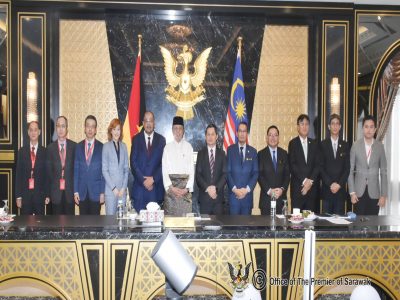
Planet QEOS and China Machinery Engineering Corporation (CMEC) are interested in investing RM10 billion to co-develop advanced Megawatt peak (MWp) agrovoltaic in Baram, to further boost Sarawak’s green energy initiative and food security. Sarawak Premier Datuk Patinggi Tan Sri Abang Johari Tun Openg was briefed on Friday by both the […]

Last week SPM results came out, 373,974 aspirants who have been waiting patiently over the last few months would now know their fate. Some 10,109 have received all A’s, the golden standard of academic success and the ticket to those looking to study the “more advanced” subjects in university. Proudly, […]

The classic knee-jerk reaction is to say, fire the coach, change the leadership of associations, and reduce the funding till they start performing better. This kind of negative reinforcement may work for kindergarten children, but we are dealing with high-performance adults – individuals much further along in their psychological and […]
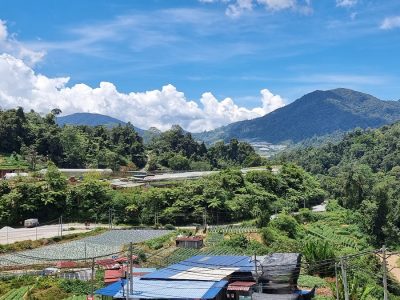
Since its earliest tea plantations in 1929, Cameron Highlands has grown to become a key player in the agricultural landscape of Malaysia, producing 40 per cent of all vegetables grown. Despite Malaysia shifting its economic focus away from agriculture, the industry remains imperative for food security and the livelihoods of […]

Although at first glance the travel industry and the agricultural sector appear to have nothing in common, they actually share more than meets the eye. The economic benefits of tourism to the agricultural sector can be multiplied several times over. “Tourism brings the end consumers closer to the source, which […]

The Malaysia Global Business Forum (MGBF) recently held a high-level roundtable themed ‘Designing the Future of the Digital Economy’, attended by industry leaders and business associations. The guest of honour was Yang Berhormat Syerleena Abdul Rashid, the Member of Parliament (MP) for Bukit Bendera in Penang. The MP’s Special Session […]

The Malaysia Global Business Forum (MGBF) will be hosting a roundtable on ‘Designing the Future of the Digital Economy’ on 23 February 2023. It is the culmination of the first three MGBF Exclusive Roundtable Series titled ‘The Evolving Threat Matrix in the Digital Economy’ held throughout 2022. According to the […]

The Founding Chairman of the Malaysia Global Business Forum (MGBF), Nordin Abdullah, today spoke on Bernama TV’s leading English talk show, The Brief, hosted by Jessy Chahal, on the topic of a stable political reality and what that means for the Malaysian economy. Nordin said, “The first thing that it […]

More than 1,100 years ago, Muhammad ibn Musa al-Khwarizmi was developing the mathematical formulas that we know today as algorithms which now have become so intertwined with the business fortunes of global media giants and the very fabric of geopolitics. A series of recent high level international reports have revealed […]
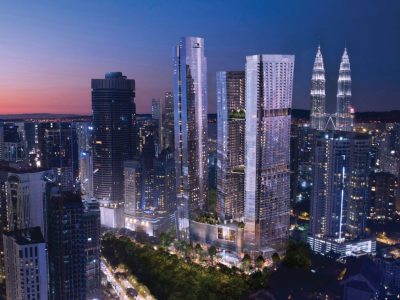
KSK Land has been recognised by the Malaysia Global Business Forum (MGBF) for its role in attracting high net-worth individuals to Malaysia post-pandemic. The first challenge in investor attraction is “selling” the country. In the context of Asia, Malaysia is competing with some very established investment destinations. The second […]
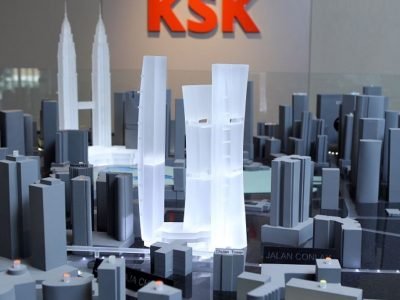
Malaysia, in particular Kuala Lumpur, continues to position itself as a regional centre to do business, educate a family and enjoy a global lifestyle. One company, KSK Land, has taken the lead in positioning itself and the city of Kuala Lumpur as a property investment destination for the global citizen […]

The upcoming budget represents an opportunity to build resilience in the critical sectors that will form the backbone of the country’s future-facing economic ambitions. This however needs to be achieved in the context of managing the community sectors most impacted by COVID-19 over the past two years. The Keluarga Malaysia (Malaysian Family) […]

Malaysia Global Business Forum (MGBF) has moved to support the creative economy as the overall economy moves into a recovery phase following the COVID19 pandemic. As a step in the direction of normalcy, the MGBF has agreed to host the art exhibition “I Know You’re Somewhere So Far” by one […]
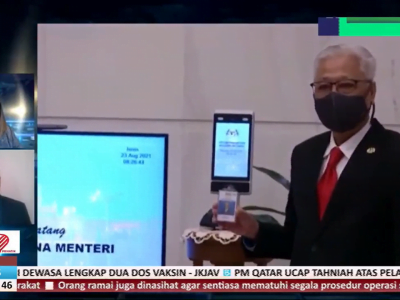
Congratulations to Datuk Seri Ismail Sabri Yaakob for taking up the mantle of the ninth prime minister of Malaysia. There is nothing normal about the situation; it could not have been scripted but it has kept the spectrum of media, mainstream and social, gripped. The first order of business for […]
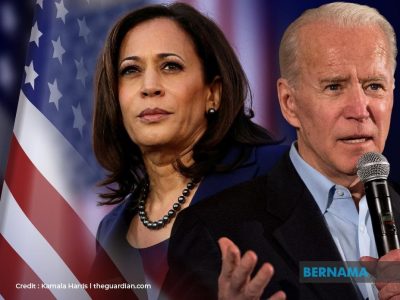
In a stirring speech to the nation, President Joseph R. Biden, Jr. stamped his brand of leadership on the presidency, in his first act as the 46th president of the United State of America, it signaled several shifts. Perhaps the weather was foreboding with snow falling before the ceremony that […]

KUALA LUMPUR, 6 July 2022 – As the global economy continues to deal with unprecedented levels of disruption caused by the pandemic and the conflict between Russia and Ukraine, the convergence of energy security and food security issues has become a front-of-mind issue faced by policy makers and consumers alike. […]

KUALA LUMPUR, 23 June 2022 — Malaysia Global Business Forum (MGBF) ties up with scoutAsia to ensure that businesses are equipped with deeper regional insights. The past two years has seen a massive shift in the way businesses are conducted with digitisation, digitalisation and automation continuously being adopted to improve […]

KUALA LUMPUR, 25 May 2022 – The Malaysia Global Business Forum (MGBF)’s exclusive roundtable on ‘Security Concerns in Critical Value Chains’ was held in a hybrid setting yesterday at the Eastin Hotel Kuala Lumpur. The guest of honour was Yang Berbahagia Tan Sri Dato’ Seri Rafidah Aziz, former minister of […]
 Any sign of increased investment in the Andaman and Nicobar islands will please those who want India to play a larger and more aggressive role in policing the Indian Ocean. The announcement, however, should be understood in the context of Indian domestic politics and India’s long history of poor follow-through when it comes to its domestic security. It remains to be seen whether India will sustain its renewed attention on its own “Far East.”
Any sign of increased investment in the Andaman and Nicobar islands will please those who want India to play a larger and more aggressive role in policing the Indian Ocean. The announcement, however, should be understood in the context of Indian domestic politics and India’s long history of poor follow-through when it comes to its domestic security. It remains to be seen whether India will sustain its renewed attention on its own “Far East.” Should Modi’s administration fail to follow through on its promises to pay more attention to its maritime territories, it would be following a well-established pattern. India has been promising to beef up its presence in the islands since at least 2001, when it created the Andaman and Nicobar Command. The decision to rotate control of the command among the services, however, preventeddevelopment of the islands as a naval hub. In 2008-09, government officials responded positively to a push by Vice Admiral Vijay Shankar, then Commander in Chief of the Andaman and Nicobar Command (CINCAN), to see the islands as “springboards” not “outposts,” but once again little was actually done. More recently, rumors have circulated that the islands might receive a dedicated fleet, but it is unclear whether this reflects government thinking or the lobbying effortsof the current CINCAN, Vice Admiral PK Chatterjee. In light of this history, observers would do well to heed Chatterjee’s admission that “future accretions remain a major challenge.”
Should Modi’s administration fail to follow through on its promises to pay more attention to its maritime territories, it would be following a well-established pattern. India has been promising to beef up its presence in the islands since at least 2001, when it created the Andaman and Nicobar Command. The decision to rotate control of the command among the services, however, preventeddevelopment of the islands as a naval hub. In 2008-09, government officials responded positively to a push by Vice Admiral Vijay Shankar, then Commander in Chief of the Andaman and Nicobar Command (CINCAN), to see the islands as “springboards” not “outposts,” but once again little was actually done. More recently, rumors have circulated that the islands might receive a dedicated fleet, but it is unclear whether this reflects government thinking or the lobbying effortsof the current CINCAN, Vice Admiral PK Chatterjee. In light of this history, observers would do well to heed Chatterjee’s admission that “future accretions remain a major challenge.”


































